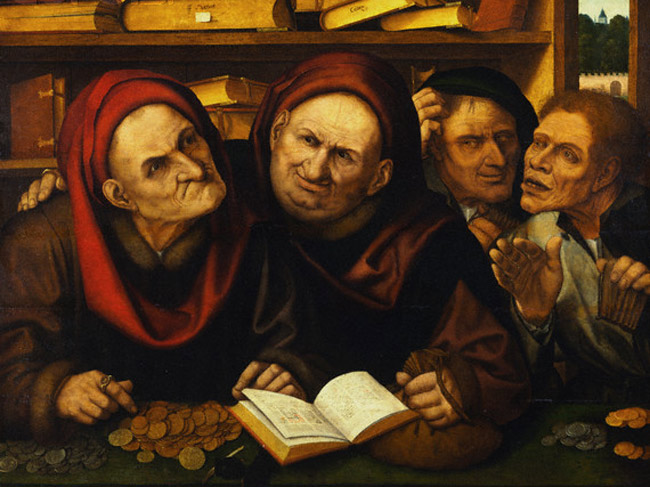History of Inflation in Poland Part VI: The First Central Bank

After the era of the Napoleonic Wars, relative peace settled in Europe in military terms. However, there were significant economic developments, including in the Polish territories.
Napoleon’s actions and subsequent war indemnities paid to Russia devastated the inhabitants of Polish lands. Poland effectively did not exist (unless we consider the so-called Congress Kingdom, which emerged after the fall of the Duchy of Warsaw and was subordinate to Russia). Overall, the situation was far from cheerful. The savings of Poles were practically non-existent, making it difficult to speak of entrepreneurial development. For a better understanding of the situation: Manchester was already a city with a population of 150,000 during this period, while Łódź was a small village. The state treasury was only a treasury in name and had to rely on loans from Jewish merchants to secure funds for its functioning. Well, something had to be done to break this deadlock.
“I have nothing, you have nothing, he has nothing…”
In 1826, the Land Credit Society was established, which two years later was transformed into the Bank of Poland, led by an important figure in our history – Franciszek Drucki-Lubecki. From 1821 to 1830, he also served as the Minister of Treasury of the Kingdom of Poland (Congress Poland).
Drucki-Lubecki is not a widely known figure today. Perhaps because, instead of being a warrior, he was interested in something as dull as economics. To illustrate the situation our hero was trying to salvage the Kingdom of Poland from, imagine that in 1821, this little state no longer paid salaries to its officials (as I mentioned in the previous part, this practically never happens!), while the nobility was drowning in debt. Russia seriously considered the ultimate abolition of the autonomy of this recently established entity. “After all, the tsar will not subsidize the Poles!” – the boyars probably thundered in the Kremlin. How would it have ended? Maybe I would be writing this text in Cyrillic today. As you can see, freedom is sometimes fought for in the sphere of economics, not on the battlefield. Sharp economic reforms were necessary, and Drucki-Lubecki understood that.
He began dramatically. He significantly increased taxes and mercilessly collected them. He quickly saved the budget but became hated, much like Leszek Balcerowicz in the 1990s (yes, I know, the kids don’t know!). Nevertheless, it helped!
The minister used to say, “Poland needs wealth to maintain independence.” Therefore, he advocated for large investments and provided citizens with loans at relatively low interest rates, ranging from 4% to 8%. The low interest rates were guaranteed by the issuance of paper money, which, however, had a silver backing. What’s more, lessons were learned from past mistakes. The exchange of banknotes for metal was not dependent on specific events (as was the case with the issuance of coupons, whose future depended on the military successes of the Kościuszko Uprising). As a result, banknotes gained considerable popularity. Their users felt secure because they could exchange them for silver at any time.
What is even more interesting is what happened during the November Uprising. Frustrated Poles began fighting against the Russians. And the same problem arose again. How to finance the warfare? Therefore, the issuance of banknotes was increased, and their silver backing decreased to only 30%. Nevertheless, throughout the entire period of the Warsaw battles, there was one active window where banknotes could still be exchanged for metal! That’s what I call treating citizens seriously!
The Bank of Poland also provided investment loans. This is how the steelworks in Dąbrowa Górnicza and factories in Żyrardów were established. Łódź, starting as a village, became the center of the textile industry. However, capitalism was only just emerging, and beginnings are always accompanied by mistakes. Therefore, such ventures were often unsuccessful. It somewhat resembled Edward Gierek’s famous investments in the 1970s. Monumental factories were built, but financial success did not always follow the grandeur. Due to the lack of labor force and the desire to cut costs, serf peasants were employed, who were not always capable of performing such tasks.
Unfortunately, the flourishing of capitalism was also hindered by the social system. Peasants could not establish businesses, and it was almost inappropriate for the nobility to work (blue blood obliges!). The introduction of innovations fell on the townspeople, but there were not many of them in Poland. Consequently, our country slowly began to lag behind the rest of Europe economically. As a result, a class of entrepreneurs did not emerge. Profits from businesses were mainly enjoyed by those who had influence in the government and could create monopolies through that influence. It was difficult to have a free market in such conditions, which favors entrepreneurship.
Russia Gets Angry!
That’s not all. We incurred the wrath of the Russians with that whole November Uprising. In retaliation, they withdrew Polish currency from circulation and introduced their own with Russian inscriptions. The official accounting unit became the ruble.
Furthermore, in 1853, the Crimean War broke out. The conflict seemingly concerned Russia, but it also affected the Kingdom of Poland. It should come as no surprise that the military operations were partially financed by Poles loyal to the tsar. The State Bank of Russia issued a whopping 735 million paper rubles. It helped with rearmament but caused inflation. However, one positive aspect was that some of our enterprising ancestors earned substantial sums of money from this war, such as by trading weapons.
Ultimately, in 1886, the Bank of Poland, which had already been marginalized, was liquidated. After this event, it became impossible to create a new class of bankers and industrialists in the Kingdom. The center of global finance began to shift overseas, the power of Prussia grew, and the finances of Russia and Austria began to decline, dragging down the territories of former Poland along the way. Moreover, a conflict was approaching that would profoundly change the political and economic situation worldwide.



![How Bitcoin Becomes a Lifeline for Victims of Repression and Financial Exclusion – Explains Lyudmyla Kozlovska [INTERVIEW]](https://webeconomy.info/wp-content/uploads/2023/10/Ludmila-Kozlowska-1000x500.jpg)


